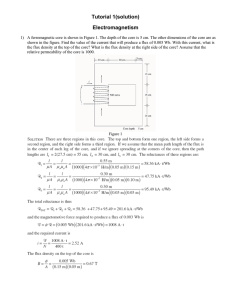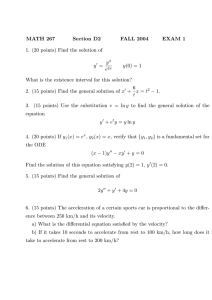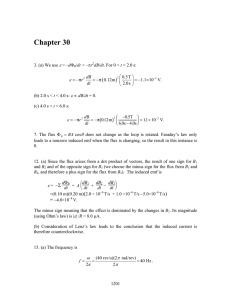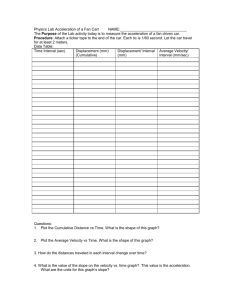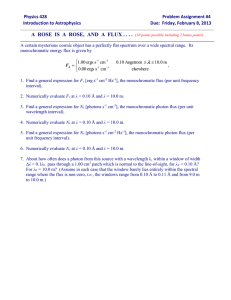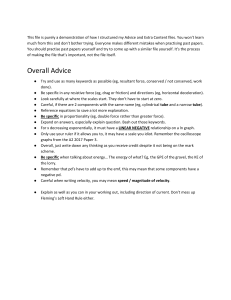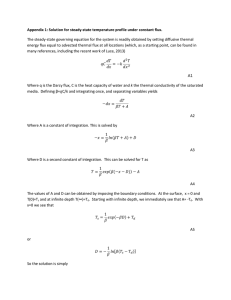Lab 2 Name: Score:
advertisement
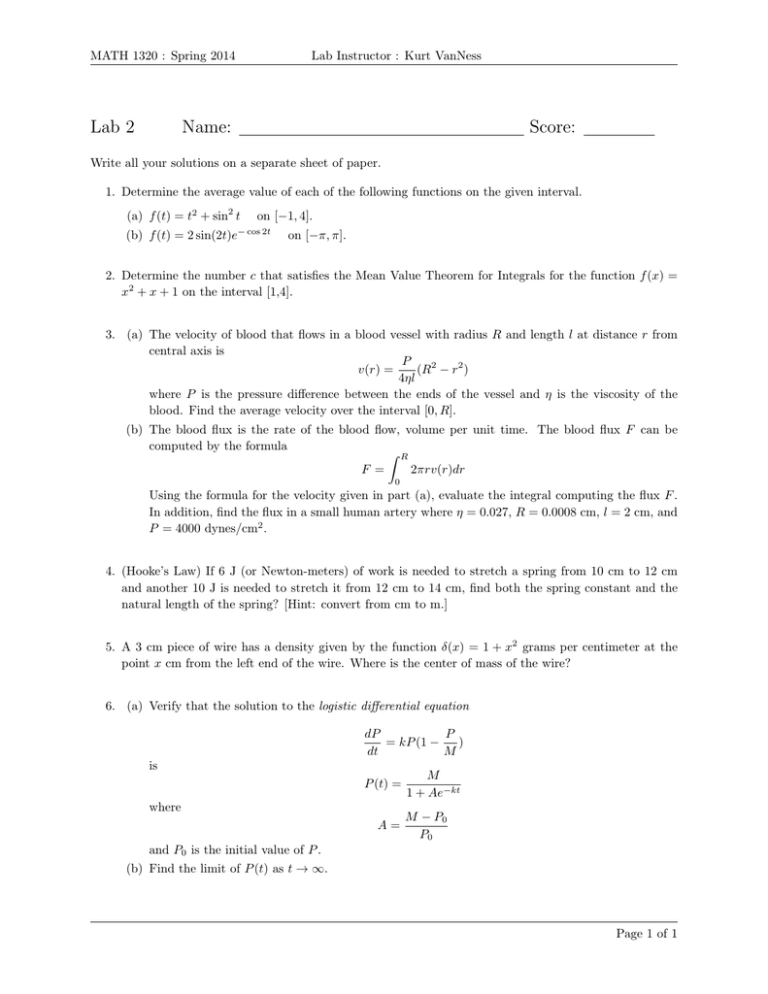
MATH 1320 : Spring 2014 Lab 2 Lab Instructor : Kurt VanNess Name: Score: Write all your solutions on a separate sheet of paper. 1. Determine the average value of each of the following functions on the given interval. (a) f (t) = t2 + sin2 t on [−1, 4]. − cos 2t (b) f (t) = 2 sin(2t)e on [−π, π]. 2. Determine the number c that satisfies the Mean Value Theorem for Integrals for the function f (x) = x2 + x + 1 on the interval [1,4]. 3. (a) The velocity of blood that flows in a blood vessel with radius R and length l at distance r from central axis is P (R2 − r2 ) v(r) = 4ηl where P is the pressure difference between the ends of the vessel and η is the viscosity of the blood. Find the average velocity over the interval [0, R]. (b) The blood flux is the rate of the blood flow, volume per unit time. The blood flux F can be computed by the formula Z R F = 2πrv(r)dr 0 Using the formula for the velocity given in part (a), evaluate the integral computing the flux F . In addition, find the flux in a small human artery where η = 0.027, R = 0.0008 cm, l = 2 cm, and P = 4000 dynes/cm2 . 4. (Hooke’s Law) If 6 J (or Newton-meters) of work is needed to stretch a spring from 10 cm to 12 cm and another 10 J is needed to stretch it from 12 cm to 14 cm, find both the spring constant and the natural length of the spring? [Hint: convert from cm to m.] 5. A 3 cm piece of wire has a density given by the function δ(x) = 1 + x2 grams per centimeter at the point x cm from the left end of the wire. Where is the center of mass of the wire? 6. (a) Verify that the solution to the logistic differential equation P dP = kP (1 − ) dt M is P (t) = where A= M 1 + Ae−kt M − P0 P0 and P0 is the initial value of P . (b) Find the limit of P (t) as t → ∞. Page 1 of 1
